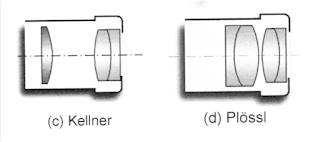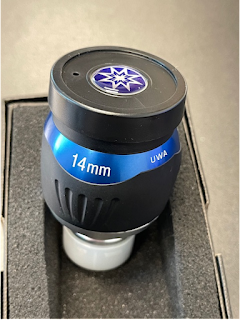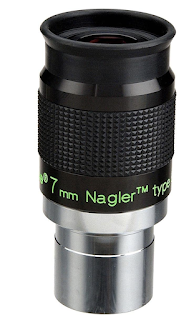Start with the mount. Just as the scabbard called “Avalon” was more powerful than “Excalibur” (the blade it sheathed), the positioning mechanism (“mount”) is more important than the telescope. In every case here, you could keep the telescope, but throw out the mount. But any telescope is better than no telescope. Given the limitations, if $159 is your price point, then these will show the stars you cannot see.
Meade 70-mm StarPro Refractor
Celestron 70-mm AstroMaster Refractor
National Geographic 70-mm Refractor
Celestron AstroMaster 70 AZ Refractor Focal length=900mm; ratio f/13. $189.95 from Mile High Astro. Comes with two Kellner oculars, 20mm and 10mm.
Meade StarPro AZ 70mm Refractor Focal length=700mm; ratio f/10. $159.99 from Mile High Astro. Comes with three Kellner eyepieces, 26mm, 9mm, and 6.3mm oculars; and a 2X Barlow lens.
National Geographic Refractor Focal length=700; ratio f/10. $109.99 from Explore Scientific. Comes with two Ploessl oculars, 26mm and 9.7mm, and a 2X Barlow lens.
The Meade mount is not easy to use. Altitude and Azimuth clutches must be very, very tight and even then, the azimuth does not work well when it works at all. At best I can turn the handle and at the same time nudge the telescope from the strut.
 |
CELESTRON
PAN-TILT MOUNT |
The Celestron pan-tilt mount is even worse. It is too tight even after disassembly, degreasing, and relubrication with WD-40 Silicon. In these tests, the Celestron was usually on an Explore Scientific First Light mount. In fact, after fighting with the mounts, the first night, I set them into an Explore Scientific Twilight I mount for its ease and stability.
The mount and tripod of the National Geographic is a bad design. The altitude (or declination) is a twist knob screw drive and that works well. However, the thumbwheel for the right-left (azimuth or right ascension) was immovable with my left thumb, and jerky with my right.
Overall, the Meade is the best of three. I was disappointed in the Celestron because I had hoped to make good use of its longer 900 mm focal length. However, it did not stand up to simple backyard stargazing. The National Geographic was worst of the three. The objective lens was flawed, displaying ghost images from internal reflection. I already own a National Geographic that I was happy with and I bought this to test against it. The new one is not as good as the old one. The old one does not have ghosts.
 |
| From Star Ware by Philip S. Harrington |
The Meade and Celestron come with Kellner eyepieces, a basic three-element design from the 19th century. Today, the baseline is the Ploessl design, also from the 19th century, but a more sophisticated four lens system that became popular in the 1980s. Kellners are considered to be cheap downgrades for these entry-level instrument packages. The National Geographic Ploessl eyepieces are Bresser branded.
Overall, these do their best work with stars, not planets. With all three, among the first views were the Orion Nebula (Messier 42), resolving the interior Trapezium group, and then turning to the nearby open cluster Messier 41 (below Sirius). The last sessions were simple tours of the rich star field near Delta Cygni, the center of the Swan or Northern Cross. It was enjoyable because the area offers so many stars including red giants and binary stars.
Jupiter, Saturn, and Venus were all challenging and disappointing in all three telescopes. I could identify the planets. The rings of Saturn were easy to define. However, all were plagued by cloudy, foggy glare from the bright disks.
However, the Meade had a saving grace. It comes with an aperture reducer, a clever old hack from experienced observers, a mask--in this case a hole in the dust cover--which allows a limited cone of light increasing the focal ratio by reducing the aperture in order to bring out more details in planets, but at a cost of brightness.
After trying out all three in their "native mode" with the eyepieces provided in the package, I followed the advice offered by a customer service representative from Mile High Astro and tried them with my best oculars.
06 November 2021 Testing with the best oculars:
TeleVue Nagler-1 82-degree 7mm
Meade 82-degree 14mm
Vixen SLV 25mm.
 |
(discount priced)
Meade logo but no name
Series 5000 14 mm
82-degree field of view
|
1915 hours
Meade 70-mm StarPro with 7-mm. Nagler
Saturn. 1 band north. 1 ring. Some hint of texture to the ring on the east side.
Titan? and Tethys? (It seemed so at the time, but the Sky & Telescope “Saturn” page (here) says no: these were just stars in the field.)
Jupiter. Hard to focus. Some chromatic aberration but north and south bands visible and some texture to equatorial region.
1938 hours
Celestron 70-mm AstroMaster with 7-mm Nagler.
Saturn. Hazy. Foggy. Titan (or star) discernable. Ring visible. 1 band north. Near limit of resolution. Image spotty and grainy.
1947 hours
 |
Nagler 7mm Type 1 82-degree Field of View 12mm Eye Relief 7 element system
|
Jupiter. Hazy. Foggy. Near limit of resolution? (Inspected objective lens and diagonal prism for dew or condensation, but both were clear.)
1955 hours
Celestron 70-mm AstroMaster with 14-mm Meade.
Jupiter smaller (of course). Not as foggy. Still hints of diffraction rings. Two bands discernable.
(Checked magnification: 900 / 14 = 64+. It should be a clear view.)
2005 hours
Meade 70-mm StarPro with Meade 82-degree 14mm. (50X)
Jupiter. Nice view. 2 bands. Some chromatic aberration. Not bad.
Used aperture reducer. Sharper image. More detail on planet. Not as bright. But more detail in the equatorial between the bands North and South.
2016
Meade 70-mm StarPro with Meade 82-degree 14mm. (50X)
Saturn with aperture reducer.
 |
Vixen SLV
Lanthanum coated
Twist-up eye cup
All metal body |
Sharp image. No bands visible. Titan (?) discernable though faint, of course and one more moon (?) behind the planet. 2032
Meade 70-mm StarPro with Vixen SLV 25-mm
Delta Cygni region.
Lots of stars. Focus OK, not perfect, but close. Scanning area, settled on a red star at center and a discernable binary to the north or east. Lots of stars to look at in my Bortle 7-8 with no Milky Way. The telescope comes with a Modified Achromatic (Kellner) 26-mm, which is OK.
07 November 2036
Celestron 70-mm AstroMaster with Vixen SLV 25-mm Delta Cygni region. (see above: The area is rich with targets to observe, record, and enjoy. This telescope comes with two eyepieces, 10mm and 20mm, which magnify too much (45X and 90X) for broad and wide fields such as this, the Pleiades, and the Moon.
Because the project began with the challenge to split the double-double of epsilon Lyrae with a 70-mm refractor, here are those notes.
01 November 2021
Celestron AstroMaster 70-mm refractor.
1948 Installed Celestron Lens&Filter kit Ploessl 6mm and kit 2X Barlow and successfully split the companions E Lyrae E1A and E Lyrae E2A.
 |
Smaller, of course,
but about like this
|
05 November 2021
1955 Chasing epsilon Lyrae.
2011 Chasing epsilon Lyrae.
Celestron 70-mm AstroMaster with 8mm Celestron Ploessl and 2X Barlow.
Note that northern members are touching. Western pair definitely separated. I tried the 6mm with 2X Barlow but it was just too hard to fight with the pan-tilt camera mount.
PREVIOUSLY ON NECESSARY FACTS
Focus on Georg-Simon Ploessl
Product Review Celestron AVX Mount and Tripod
Galileo and Saturn: Epistemology, not Optics
Observing with NASA: An Open Platform for Citizen Science
Below the fold.
Open the Jump to see all of the notes that I took 31 October to 05 November 2021.















